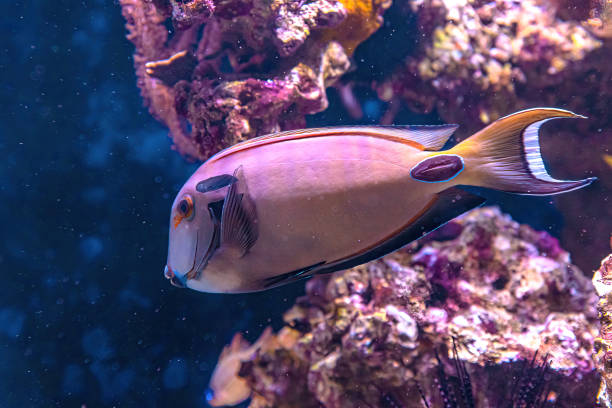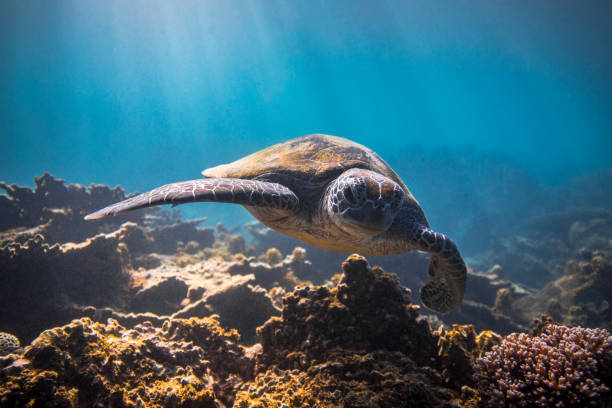Ningaloo Reef vs. Great Barrier Reef: A Marine Adventure

Australia is a land of unparalleled natural beauty, with two of the world’s most spectacular coral reefs: Ningaloo Reef and the Great Barrier Reef. Travelers drawn to underwater wonders often find themselves weighing which reef to visit. Each offers its unique charm—the Great Barrier Reef’s vast biodiversity and grandeur contrasts with the intimate, close-to-shore appeal of Ningaloo. This article explores the features, experiences, and conservation efforts associated with each reef, helping you decide which Australian marine adventure to embark upon.
Location and Accessibility of Ningaloo and Great Barrier Reef
The Great Barrier Reef, off the coast of Queensland, is immense and can be accessed from various points like Cairns, Port Douglas, and the Whitsunday Islands. Its sheer size means a longer boat ride to reach the outer reef, but there are also many closer, coastal islands for easier access. In contrast, Ningaloo Reef, located off the coast of Western Australia near Exmouth, is fringed along the mainland, making it remarkably accessible for snorkelers who can swim out directly from the beach. Tourism infrastructure is more developed around the Great Barrier Reef, while Ningaloo offers a more remote, less crowded experience.
Marine Biodiversity and Experiences
The biological diversity of the Great Barrier Reef is unmatched, with an extraordinary array of coral species, fishes, turtles, sharks, and an abundance of other marine life. It boasts a range of dive sites suitable for all skill levels, from beginners to expert divers. Ningaloo Reef, on the other hand, has an amazing spectacle – whale sharks. These gentle giants migrate through Ningaloo between March and July, and snorkeling with them is a major draw. Both reefs offer opportunities to see manta rays and humpback whales, though these interactions are more predictable and frequent on Ningaloo due to its proximity to the coast.
Conservation Efforts and Eco-Tourism
Both Ningaloo Reef and the Great Barrier Reef are World Heritage-listed sites, demonstrating their global ecological significance and the stringent conservation efforts in place to protect them. The Great Barrier Reef Marine Park Authority has implemented numerous measures to preserve its delicate ecosystem, including limits on fishing, marine tourism management, and scientific monitoring. Ningaloo is similarly protected, with sustainable tourism as a focus, ensuring that interactions with wildlife, such as swimming with whale sharks, are conducted responsibly. Regardless of your choice, selecting eco-certified tour operators is highly recommended to minimize your ecological footprint.
Best Time to Visit
The ideal time to visit each reef depends on what you want to see and do. Here’s a breakdown of the best times to visit:
- Great Barrier Reef:
Peak season is from June to October when the weather is cooler and visibility is at its best. This period also coincides with the annual coral spawning, an incredible natural event, usually in November. - Ningaloo Reef:
Visit between March and July if you wish to swim with whale sharks. For those interested in seeing coral spawning at Ningaloo, the best time is around a full moon in March or April.
While both reefs are year-round destinations, be mindful of the Australian summer months (December-February), as this can bring stinger season and cyclones, which may affect water clarity and overall experience.
Travel and Accommodation Options
Both the Great Barrier Reef and Ningaloo boast a range of accommodation options to suit various budgets and preferences. Near the Great Barrier Reef, you can choose from luxury island resorts, family-friendly hotels, and budget-friendly hostels. Liveaboard diving trips are also popular. In contrast, accommodations near Ningaloo Reef tend to be more subdued, reflecting its remote location, with choices ranging from camping and caravan parks to upscale eco-resorts. Both locations require a fair bit of travel from major Australian cities, so planning your trip in advance is critical.
Conclusion
Deciding between Ningaloo Reef and the Great Barrier Reef ultimately hinges on what you’re looking for in your underwater adventure. The Great Barrier Reef offers grandeur and vast biodiversity with established tourism offerings, while Ningaloo provides a unique, intimate encounter with marine giants, just a stone’s throw from the pristine beaches. Regardless of your choice, both reefs promise a magical and transformative experience that will highlight the majesty of our oceans and the importance of preserving these natural wonders for generations to come.
FAQs
- Can I snorkel at both Ningaloo Reef and the Great Barrier Reef?
Yes, both reefs are excellent for snorkeling, with Ningaloo Reef being particularly accessible from the beach.
- Are there any specific certifications required for diving at these locations?
While no specific certifications are mandated beyond a standard Open Water Diver for diving, always check with tour operators for any additional requirements or recommendations.
- Is it possible to see the coral spawning at both locations?
Yes, both reefs have a coral spawning season. For the Great Barrier Reef, it usually occurs in November, and in Ningaloo around March or April.
- Which reef is better for a first-time visitor to Australia?
First-time visitors often choose the Great Barrier Reef due to its fame and the wide range of activities and amenities. However, Ningaloo is an incredible alternative for those seeking a less commercial experience.
- How can I ensure my visit is environmentally friendly?
Choose eco-certified tour operators, follow all guidelines provided for interactions with marine life, and be conscious of your environmental footprint when visiting these delicate ecosystems.
